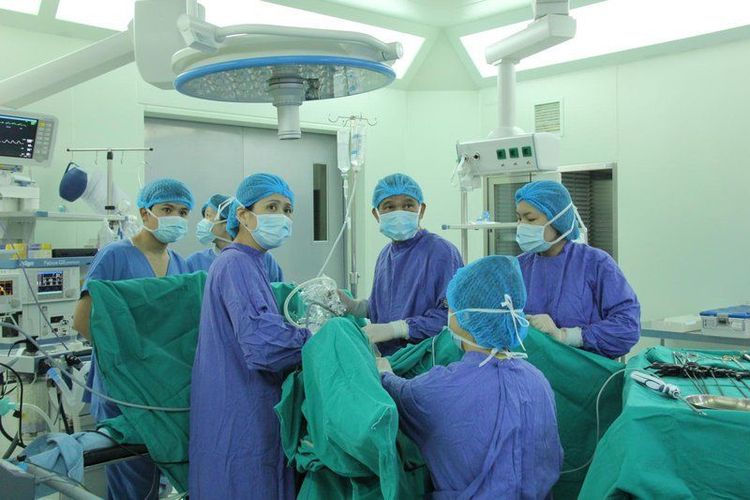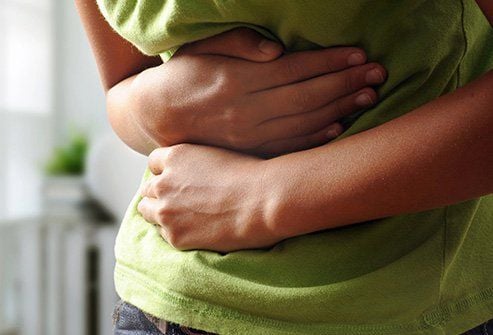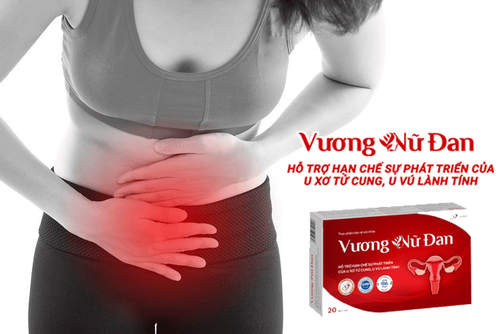This is an automatically translated article.
The article was professionally consulted with Specialist Doctor II Tran Thi Mai Huong - Obstetrician and Gynecologist - Department of Obstetrics and Gynecology - Vinmec Hai Phong International General Hospital.
Uterine fibroids are benign tumors that develop from the muscle of the uterus. This is a common disease in women of reproductive age, but if not treated promptly, uterine fibroids can cause dangerous complications.
1. Are uterine fibroids dangerous?
Uterine fibroids often have some manifestations such as vaginal discharge, abdominal pain, menstrual disorders, constipation, flatulence, back pain, fatigue, ... Usually, this is a benign disease, However, if not treated promptly, uterine fibroids can cause a number of dangerous complications such as:
The tumor is twisted, causing severe abdominal pain, which can rupture the tumor causing acute blood loss, infection , peritonitis,... Prolonged vaginal bleeding or heavy menstrual bleeding causes the patient to lose a lot of blood, which can be life-threatening. Uterine fibroids affect fertility: delay pregnancy or infertility. Pregnancy can cause premature birth or miscarriage,...

2. How can uterine fibroids be operated on?
Uterine fibroid surgery will be based on the size, location and condition of the disease to have an appropriate method. Currently, uterine fibroids are intervened through embolization or surgery. Embolization is a method of blocking the arteries that feed the fibroids and is only done for women who have given birth. The most common surgical methods are open surgery, laparoscopic surgery and robotic laparoscopy.
Open surgery: After anesthesia, the doctor will make an incision from the abdominal wall to access the tumor. The tumor was removed from the uterus and the wound sutured. Open surgery will cause pain, blood loss, and slow recovery time.
Laparoscopic surgery : With fibroids under the peritoneum or in the myometrium, suitable size will be laparoscopic surgery. Similar to open surgery, the patient will be given general anesthesia, then a laparoscope and specialized surgical instruments will be inserted into the uterus. When the surgery is done, the doctor closes the incision and disinfects it. Laparoscopic surgery helps to overcome the disadvantages of open surgery such as: high aesthetics, less bleeding and invasion, limited complications, fast recovery time.
Robotic laparoscopic surgery: this is considered the most modern and superior method today in the treatment of uterine fibroids. Robotic laparoscopic surgery ensures high accuracy, easy control. The incision is only 1-2cm to help reduce the risk of infection, high aesthetics. Less pain, quick recovery should shorten hospital stay, save costs.
In some cases of severe uterine fibroids, patients have to remove the entire uterus to prevent complications, robotic surgery helps patients recover physically faster.
3. Laparoscopic appendectomy to treat uterine fibroids

Laparoscopic appendectomy is a routine technique at Vinmec Hai Phong International General Hospital, the advantages of the technique include:
Solving pathological appendages Fast recovery time compared to laparotomy . Minimize antibiotic use due to antibiotic prophylaxis. Procedure:
Step 1: Consultation and approval of surgery with the Medical Director, Head of Obstetrics Department and Anesthesiologist before the procedure. Step 2: Perform surgery in the operating room. Step 3: Post-operative care. Doctors performing:
Specialist Doctor II Pham Thi Tuyet Mai: a doctor with over 30 years of experience in examining and treating Obstetrics and Gynecology, especially in lower-line surgeries such as surgery for uterine fibroids, cervical cancer, etc. .. Specialist Doctor II Tran Thi Mai Huong: Formerly Deputy Head of Obstetrics and Gynecology Department, Deputy Head of Delivery Department of Hai Phong Obstetrics and Gynecology Hospital. Mai Huong has 25 years of experience in the field of Obstetrics and Gynecology, lower tract surgery, laparoscopic surgery. Specialist II Bui Thi Thu: former deputy head of the Department of Gynecology, Department of Medical Examination at Hai Phong Obstetrics and Gynecology Hospital for many years. The doctor has strengths in laparoscopic surgery for gynecological diseases such as uterine fibroids, ovarian cysts, ... and also obstetric surgeries. Specialist Doctor I Pham Thi Yen: a doctor with 11 years of experience in examining and treating Gynecologists with strengths in laparoscopic surgery for gynecological and obstetric diseases. Normal manifestations after surgery
The patient's vital signs (pulse, temperature, blood pressure) are stable. No accident happened. The patient was discharged from the hospital as scheduled. Abnormal manifestations:
There is an accident. May require intervention after surgery. The patient was discharged from the hospital on schedule. Vinmec Hai Phong International General Hospital is equipped with the most modern equipment in Vietnam such as anesthesia machines in the operating room, providing optimal treatment efficiency. Under the supervision of a team of experienced doctors, the procedures are carried out seriously, regularly checked by someone, and always updated with the latest procedures and regulations in the world.
Please dial HOTLINE for more information or register for an appointment HERE. Download MyVinmec app to make appointments faster and to manage your bookings easily.














